Having scored high on the first morning with the trap in its owner Rob’s garden – Poplar Hawk Moth, Blood-vein, Buff Ermine, Burnished Brass – and then the next morning in our garden – Ruby Tiger, Canary-shouldered Thorn, Jersey Tiger – I had high hopes for the last couple of weeks.
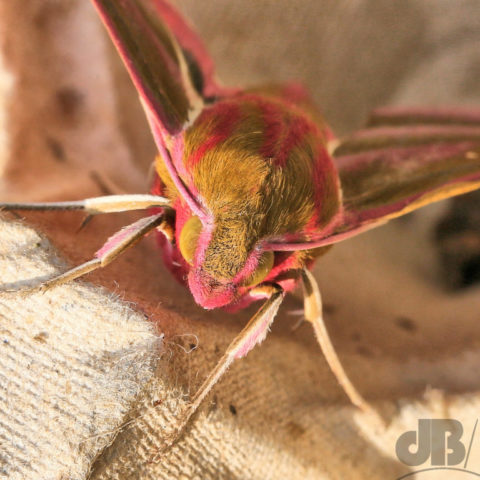
Indeed, the moth-ing has been rewarding so startling and stunning creatures have turned up – Setaceous Hebrew Character, The Spectacle, Pale Prominent, Willow Beauty, Mother of Pearl, Angle Shades etc etc…about 50 different species I have identified with some assistance from Brian Stone, Rob Ellis, Leonard Cooper, and others, as well as Ian Kimber’s excellent and comprehensive UK Moths site.
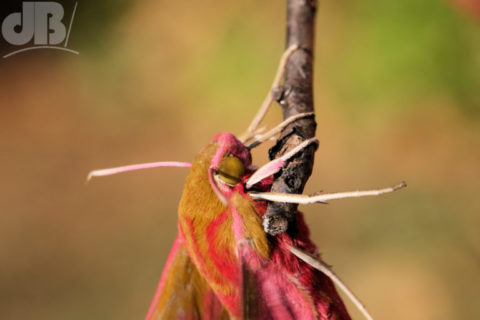
However, this morning’s haul looked less hopeful, especially when opening the trap at least three or four large-ish moths (Yellow Underwing and another not identified) escaped into the shrubbery in a flash (of yellow under their wings). Extracting the cardboard egg trays gingerly nevertheless and observing some of the familiar species Brimstone, Silver Y, Turnip, Least Carpet – I turned over the last of the four and there was the beauty of this blog post title – Elephant Hawk-moth – with its olive-green and, almost-lurid pink colouration.
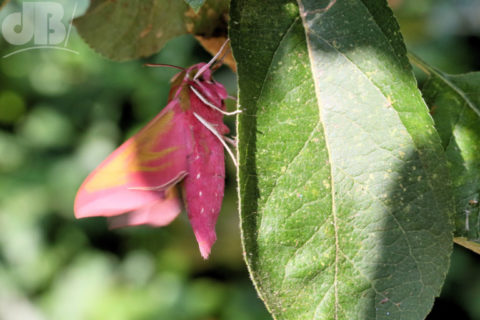
The Elephant sat a spell for a few closeups and then tentatively clambered about a proffered twig and began its quivering to warm up in the early morning sun. I could see it quivering and feel the vibration through the twig. It then hopped on to a leaf of our apple tree for a few final poses before disembarking and heading for the ivy-clad fence and upwards and onwards towards our neighbour’s garden and freedom in their hedge. To fly another day…or, rather, night.
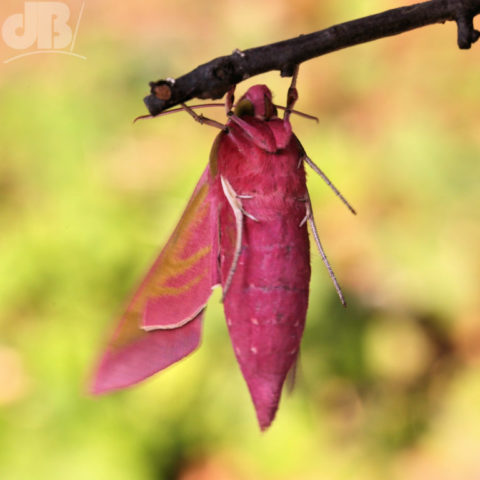
Incidentally, its common name comes from the fact its larvae (caterpillars) look like an elephant’s trunk. Intriguingly, and as you might expect for such a colourful moth, the Elephant Hawk-moth has very sensitive eyes and was one of the first animals in which nocturnal colour vision was reported by science. Chemists have used gas chromatography and mass spectrometry to identify the female sex pheromones as (11E)-11-hexadecenal and (10E,12E)-10,12-hexadecadienal [(E,E)-bombykal] – https://link.springer.com/article/10.1007%2FBF01920249.
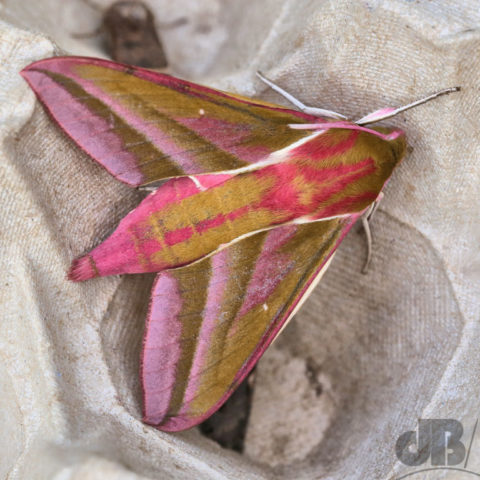
The Elephant Hawk-moth is not uncommon in the UK, especially across the lowlands of southern England. Usually a night-flyer May to July, so quite lucky to catch one more than a week into August as their season tails off. The weather had changed somewhat yesterday from the persistent heat and dry windless days and nights to a smattering of raindrops and a bit of wind and a modest decline in temperature.